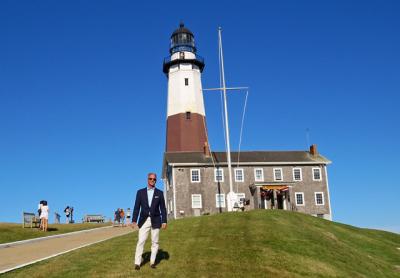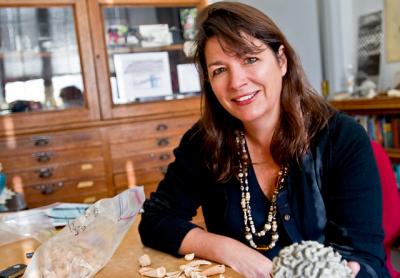An East Hampton Elegy for Gun Policy Reform
An East Hampton Elegy for Gun Policy Reform

The 1980 murder of John Lennon by a deranged fan with easy access to a handgun shocked the world. Twenty-four years later — to the day — the guitarist Darrell Abbott, better known as Dimebag Darrell, was shot five times in the head, onstage, by a former Marine. He and three others were killed.
In between those events, in 1999, two students at Columbine High School in Colorado shot and killed 12 fellow students and one teacher, and injured 21 others. While that massacre was hardly the first to occur in a school, the number of mass shootings in schools has steadily risen, alarming people from all walks of life, not least the students already confronted by multiple stresses in today’s world.
The nation’s epidemic of gun violence continues unabated in 2018, the effect a desensitizing to what was once too horrific to contemplate. But the Feb. 14 mass shooting at Marjory Stoneman Douglas High School in Parkland, Fla., in which 17 students and staff were killed and 17 more wounded, galvanized students and adults alike, both there and around the country. Legislators in the proverbial pocket of the National Rifle Association, who reliably offer “thoughts and prayers” after each incident, now scurry from the scorn heaped upon that empty, useless gesture.
In East Hampton, a response to the slaughter in Parkland and elsewhere will manifest next Thursday at Guild Hall with Young Musicians Unite for Gun Sanity, a concert and fund-raiser for Moms Demand Action for Gun Sense in America. A group founded in response to — what else — a shooting, this one at Sandy Hook Elementary School in Newtown, Conn., in which 20 six and seven-year-old children were shot and killed along with six adults, Moms Demand Action has chapters in all 50 states and works to establish common-sense reform of gun policies.
The event will start in the garden at 6 p.m. with music by Hot Club of Montauk, voter registration, and remarks from speakers including Anna Skrenta of Moms Demand Action’s eastern Suffolk County chapter, Chief Michael Tracey of the East Hampton Town Police Department, and Sinead Murray and Allura Leggard, student activists. Starting at 8, three young bands from the South Fork, Earthreal, the Sectionals, and Big Karma, will perform in the John Drew Theater.
Nigel Noble, a director and sound engineer, will document the evening with a five-person camera crew, and plans to complete a film depicting the event.
The event was conceived by Michael Clark, the former proprietor of Crossroads Music in Amagansett, who produces live-concert and studio performances that are broadcast on LTV. “Everybody is stepping up,” he said last week of the donations of time, money, food, and other items that have been offered for the event. Gun violence, he said, “is a very hot issue, even though we kind of operate in a vacuum on the East Coast because we have very strict gun laws. But that doesn’t mean things can’t happen. Obviously, it’s a hot issue, and people recognize that something has to be done to close loopholes.”
The catalyst, said Mr. Clark, who has a child in college, was the shooting in Parkland and a harrowing cellphone video he saw on Facebook. Until it was removed from the social networking site, it allowed a visceral, unsanitized look at the reality of a mass-shooting event, depicting Marjory Stoneman Douglas High School students “screaming, sobbing, crying, and they’re just stepping over bodies,” Mr. Clark said. “There’s blood everywhere, they go out to the hallway, and they’re stepping over bodies to get out of the building, and I can’t un-see it. I can’t un-see it.”
“Obviously,” Mr. Clark continued, “the families of the ones killed are so severely impacted, but what about the kids who were just in the school? You live with that for the rest of your life. I needed to do something, rather than just continue bloviating about it on Facebook. My wife said, ‘Stop arguing with people, go do something about it.’ ”
Students from Marjory Stoneman thrust themselves into a new role as activists, drawing national attention to their experience and to the issue of gun violence. (Predictably, they have also been targeted from some corners, and falsely accused of misrepresenting themselves.)
“All the students that have spoken out are so intelligent, well spoken, eloquently presenting themselves,” said Ms. Murray, who graduated from Pierson High School in Sag Harbor this year. “I think they give a really good name to students. Not a lot of people who are 18 years old are taken seriously, even though we’re presented with the right to vote.”
“My life, in theory, is the one being threatened,” Ms. Murray, who will attend college in New England this fall, said. “People are getting killed in movie theaters, at concerts, but time and time again, it’s schools or colleges. I’m glad that students can present themselves in such a mature way. I’m proud to be an 18-year-old in this time.”
Ms. Skrenta, who has three children and lives in Amagansett, recalled the horror she feels every time another school shooting occurs. “The frequency of them is devastating,” she said. “My daughter comes home from school and talks about their lockdown drills, the place where her class goes. . . . She speaks about it matter-of-factly. It’s really upsetting.”
Gun violence affecting African-American youth has affected her even more, she said. “Children in America in situations where they should feel safe — interacting with a police officer, being in class — that should be taken for granted,” she said. “That they are being shot and killed, coupled with the political climate since the election, made me want to get involved.” Moms Demand Action, she said, “is incredibly effective at change on the legislative level, the state level. We were really excited to get involved with them.”
Mr. Noble got involved because “I have small grandchildren,” he said. “I want them to be safe, and I want all children to be safe.” He was sharply critical of the Concealed Carry Reciprocity Act, which the House of Representatives passed in December. If enacted, it would allow any person with a concealed carry permit from one state to carry a weapon in any other state, and allow anybody with a concealed carry permit to do so on any federal land, such as national parks or national monuments.
Representative Lee Zeldin of New York’s First Congressional District was a co-sponsor in the House. “Lee Zeldin’s idea of concealed carry is insane,” Mr. Noble said, adding that some 20 million people visit New York City every year. “Two million of them walking around with a gun in their pocket is not my idea of safety.”
At Guild Hall, Ms. Skrenta and other volunteers for Moms Demand Action will provide information about the organization and solicit membership. “Then we’ll support Michael however we can,” she said of Mr. Clark. “He’s such a fantastic community leader.”
Mr. Clark said that an important message to the public is that “We’re not trying to take your guns away. If you go hunting, skeet shooting, do everything legally, good for you. But that doesn’t happen all the time. This is about making safety a priority.”
“I do believe that the two sides are a lot closer together than the N.R.A. allows us to be,” Mr. Noble said. “Even gun owners want gun safety.” His hope, he said, “is to make a film that suggests that young people get out and vote and express their ideas.”
Tickets cost $15 to $40, $13 to $38 for members, and are available at the box office, at guildhall.org or theatermania.com, or by calling 631-324-4050 or 866-811-4111. Donations to Moms Demand Action have also been suggested.






